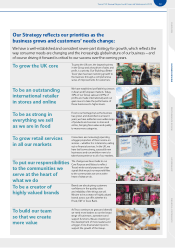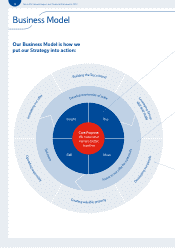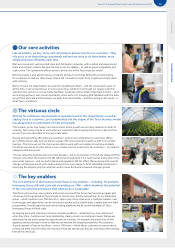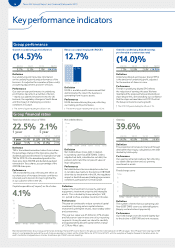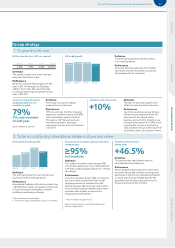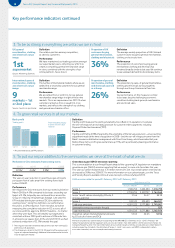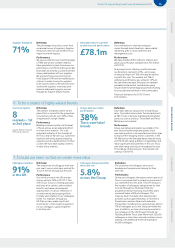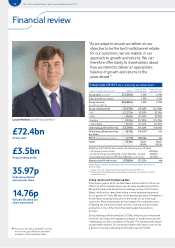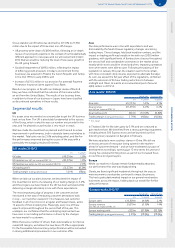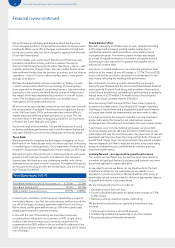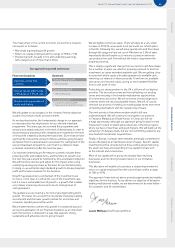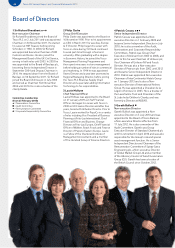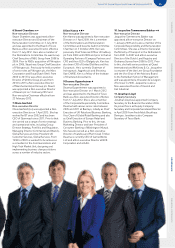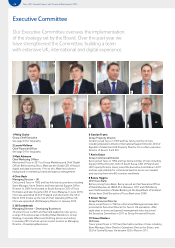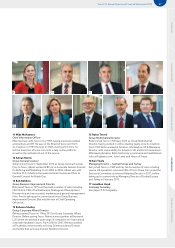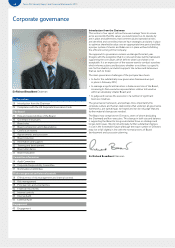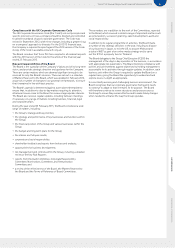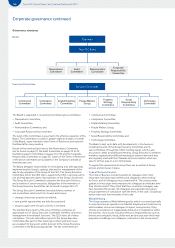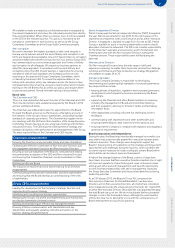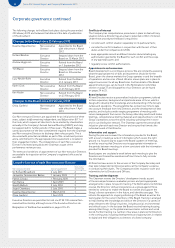Tesco 2013 Annual Report Download - page 27
Download and view the complete annual report
Please find page 27 of the 2013 Tesco annual report below. You can navigate through the pages in the report by either clicking on the pages listed below, or by using the keyword search tool below to find specific information within the annual report.
23
Tesco PLC Annual Report and Financial Statements 2013
OVERVIEW BUSINESS REVIEW PERFORMANCE REVIEW GOVERNANCE FINANCIAL STATEMENTS
This means that, in the current economic environment, investors
can expect us to deliver:
• Mid-single digit trading profit growth
• Return on capital employed within a range of 12% to 15%
• Dividend growth, broadly in line with underlying earnings,
with a target cover of more than 2 times
Generate positive free
cash flow
Trading profit growth
Sustainable ROCE
Dividend growth
•Mid-singledigit
•12%to15%range
•InlinewithunderlyingEPS
•Targetcoverofmorethan2times
Allocate capital within range
of 4% down to 3.5% of sales
Maintainastronginvestment
grade credit rating
Financial disciplines Guiderails
Our approach to growth and returns
We will update on our progress in the context of these objectives
as part of our future results announcements.
As we described earlier, the fundamental change in our approach
to new space also has implications for our sale and leaseback
programme. Two years ago, we reviewed the programme and
announced a steady reduction in the level of divestments, in order to
ensure that any property profits released were matched to the level
of new profit created by development activities. Given that we have
significantly reduced the amount of these activities going forward,
we believe that it is appropriate to accelerate the scaling back of the
sale and leaseback programme, such that it is unlikely to make
a material contribution after the next few years.
Our reported underlying profit measure currently includes these
property profits and related items, and therefore its growth over
the next few years would be held back by this accelerated reduction.
We will therefore disclose and adjust for this impact when using
underlying earnings per share as the basis for our dividend policy.
In doing so, we will better align dividend growth to the key targeted
profit performance measure for the business.
Growth has always been a central part of the investment case
for Tesco. To be clear, it is still at the core of the investment case,
but it is now a sustainable level of growth – a growth that enables
us to deliver improving returns and a much stronger level of
cash generation.
The guidance we are sharing is for mid-single digit trading profit
growth. This takes into account the structurally changing retailing
environment and the lower growth outlook for economies and
consumer spending around the world.
We are determined to achieve this growth in a balanced way and
we see the application of our financial disciplines as an important
part of ensuring it is delivered in a way that supports strong,
sustainable and attractive returns going forward.
We will tightly control our capex. There will likely be a very small
increase in 2013/14, as we push on at pace with our refresh plans
in the UK. Following this, we will move quickly into and then down
through the range we have set out of 4% down to 3.5% of sales.
Importantly this will enable us to move to a position where we
can produce free cash flow without the historic requirement for
property proceeds.
This is clearly a significant change from our historic cash flow shape.
For a number of years, we relied on property proceeds to fund our
investment, as capex exceeded available cash. We are getting close
to a position where capex is broadly equivalent to available cash,
removing our reliance on these proceeds. From then on, available
cash grows and exceeds capex, giving us much greater flexibility
from a cash point of view.
Protecting our strong position in the UK is still one of our highest
priorities. The best returns now are from refreshing our existing
stores and investing in the broader multichannel opportunities
of convenience and online. We will not invest in those large-store
schemes where we see unacceptable returns. We will, of course,
continue our process of making our existing large stores even more
compelling destinations with the repurposing of space.
Our next priority is Asia where modern retail is still very
underdeveloped. We will continue to strengthen our positions
in Thailand, Malaysia and South Korea. In China, we still see
a huge opportunity, although our approach going forward is more
measured, focused on stand-alone retail sites in the three regions
where we have critical mass and good margins. We will build out the
remaining 13 Lifespace malls, but are not committing capital to any
new freehold investments beyond these.
Finally, in Europe, our large-store networks are largely complete and
we are effectively at a maintenance level of capex. Specific capital
investments will be considered, but these will be about improving
the assets we have and expanding in low capital formats such
as the internet and convenience.
More of our capital will be going into already high-returning
businesses and into driving forward returns in our immature
businesses.
This allocation will enable us to produce a steady improvement in
return on capital employed from the current base, within a range
of 12% to 15%.
The approach I have laid out above provides appropriate and realistic
objectives for the business. As we deliver our objective of being the
leading multichannel retailer, we are determined to do even better –
for customers and for shareholders.
Laurie McIlwee Chief Financial Officer


